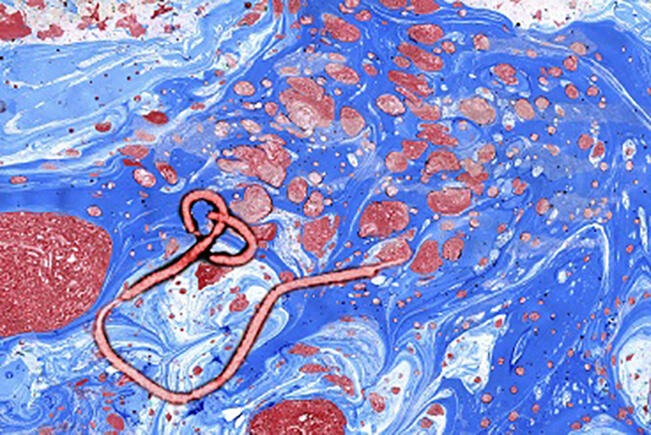
LSTM’s Seminar Series continued this week with a talk from David Pigott, from the Spatial Ecology and Epidemiology Group, Department of Zoology, University of Oxford. His presentation, entitled “The spatial ecology of the Ebola virus disease”, was introduced by LSTM’s Dr Alvaro Acosta- Serrano
David began by giving a brief introduction of Ebola, which was named after the river near the site of its first recorded outbreak in Zaire in 1976. He talked through the other outbreaks up to the current large scale outbreak in West Africa pointing out that there have been five strains of the virus and that there have been more people infected during this current outbreak that throughout the history of the virus combined.
He went on to discuss the symptoms of the virus, how its mortality rate has varied depending on elements such as strain involved and the length of time between infection and the first diagnoses being made. He looked at treatment, which is currently mainly supportive to counteract the symptoms, and prevention which is isolation of the patient and barrier methods in a clinical setting. There are potential anti-viral treatments at various stages of development, such as the publicised monoclonal antibody treatment ZMapp as well as a number of vaccines at testing stage, but he explained that due to the relatively low mortality burden prior to the current outbreak the impetus for development has not been there.
David then explained the work that had been undertaken to identify which animals carry the virus and those which are described as disease reservoirs. He described work that was carried out in early 2000s, and that in 2005 the virus was found in RNA extracted from 3 species of bats, and has been reported in other bat species since it is now a commonly held view that bats are the Ebola disease reservoir.
He then went on to describe the work that he and colleagues had been undertaking to map the potential risk areas in Africa, where Ebola may be transmitted from animal to humans in the future. When considering Ebola spatially, the team looked at where transmission is like to happen from animals to humans to identify spill over risks as well as how the virus is spread between humans and what environmental factors might be influencing that. They started by looking at human outbreaks, identifying the index cases, those first humans infected to see how it has spread and looking at all recorded animal cases. They then went on to look at areas were there had been an absence of cases and then overlaid potential environment factors. This resulted in a niche map predicting risk in 22 countries, mainly in West and Central Africa with a few at-risk areas predicted in East Africa as well.
While the niche map may not account for onward transmission from human to human David talked about models that may be used to predict possible movement of the disease through communities by assessing their connectivity. The two models he cited were the gravity model and the radiation model as well as looking at risk through air travel connectivity. He explained that mobile phone data, often used to look at diseases like malaria could also be useful in quantifying human movement, although he acknowledged the limitations, including the fact that there is little data about cross border travel. By looking at connectivity for further outbreaks there is the potential opportunity to strengthen facilities and ensuring there is the capacity to deal with diagnostics at the districts with the most risk.